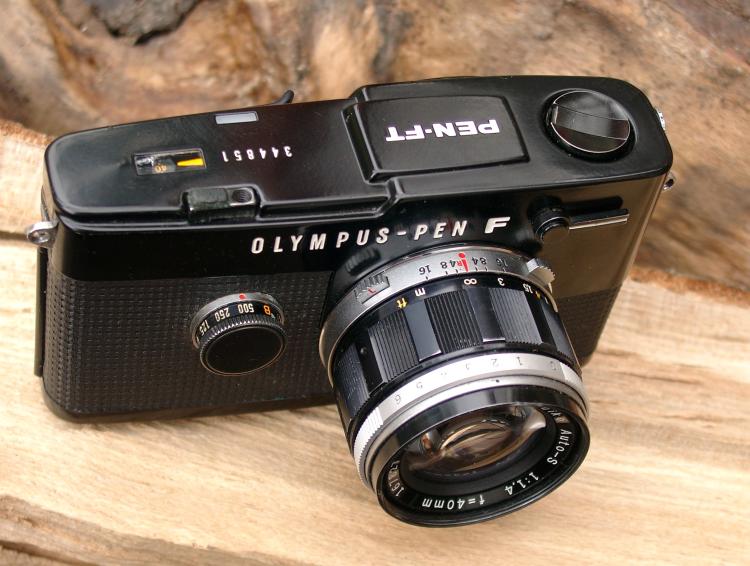
The new 2016 PEN-F is surely one of the most beautiful digital cameras ever made. It attracts admiring glances everywhere I take it. It is also a worthy successor to the original PEN-F, a half-frame single-lens reflex which, in its day, was one of the most advanced cameras on the market.
At the Biévres Photo Fair I took the opportunity to pick up a cheap PEN-FT, the second version of the original PEN-F with TTL exposure metering and a single-throw film advance. As a bonus, the little camera came with a good-condition G.Zuiko Auto-S 40mm f/1.4 prime lens and this little beauty can be used on the modern digital PEN-F where it has a 58mm equivalence in full-frame terms. Normally, a 40mm would equate to 80mm in full-frame. It does need an adapter, PEN-F to Micro Four Thirds, and I found one of these at the fair for a bargain €15. As the stallholder commented, “I don’t get asked for these very often.”
I confess I hadn’t spent much time thinking about the original PEN-F until I got my hands on the FT. But it is clearly a solid, well-built piece of kit and I can see why it was so successful in its day. The half-frame experience is odd. When you peer through the finder you are presented with a tall, narrow view which is initially very strange. To take a landscape shot you need to turn this camera on its side in the way that you would grab a portrait shot on a full-frame camera. Since it squeezes two shots into the space of one 35mm frame, the Olympus can produce 72 photos from one 36-frame film.

Controls
Speed is set on the front dial which also doubles as an ISO setting (by pulling out and twisting) while the aperture ring on the lens has a very unusual double scale. One side shows normal aperture values from f/1.4 (in the case of this particular lens) to f/16. On the bottom of the scale are numbers 0-6. A clutch mechanism (similar to that on the latest M-Zuiko m43 lenses to change between manual and auto focus) enables the required scale to be brought to the top so that it is easily visible.
The reason for the 0-6 numbering is that it can be set to correspond with the viewfinder scale to the left of the image. This works in conjunction with the TTL metering to show the correct aperture to match the set speed. If, on the other hand, you want to work with conventional aperture values you simply pull out the aperture dial and bring the required scale to the top. There is a battery compartment on the bottom plate of the camera but it is currently empty—a wise precaution on the part of the seller. I need to investigate the correct cell but suspect I will have the same problems outlined by William Fagan in respect of the Leica M5.
As with all my old cameras, I will get it running and expose a roll of film to see how it performs (and with 72 exposures it will be a lengthy acclimatisation).
Complete set
The lens has already been pressed into action to take the above picture of the ca. 1966 PEN-FT. I mounted it on the new PEN-F and grabbed this shot in the hotel room near Biévres.
There is method in all this madness. At the Photographica fair in London on May 22 I found another cheap PEN, the original digital PEN EP-1. This gives me a photographic record of sixty years of PENmanship and will provide a useful aid to completing the review of the new digital PEN-F.
Finally, a word of caution. This has been written from my observations of the original FT, completely without the aid of instructions or of web searching. The comments are my observations and could well be wrong, so please check your own PEN-F lore before quoting me.
__________________
- Subscribe to Macfilos for free updates on articles as they are published. Read more here
- Want to make a comment on this article but having problems? Please read this
